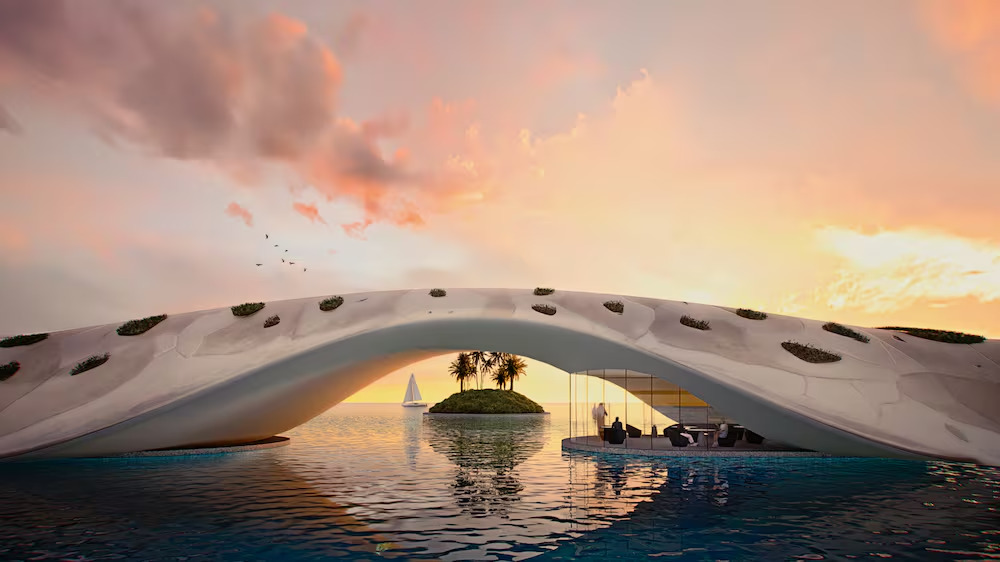Dubai unveiled plans for the construction of the emirate’s longest public beach in Jebel Ali, which is set to serve as a major eco-tourism destination.
Sheikh Hamdan bin Mohammed, Crown Prince of Dubai and Chairman of The Executive Council of Dubai, has approved the Master Plan for the Jebel Ali Beach Development Project, approved the master plan for the Jebel Ali Beach Development Project, which will stretch 6.6km and will allow visitors to watch turtles in their natural habitat. It is part of a wider strategy to revamp Dubai’s public beaches and increase their size by 400 per cent under the Dubai 2040 Urban Master Plan.
Sheikh Hamdan highlighted the project’s role in enhancing Dubai’s urban experience, stating, “Under the directives of His Highness Sheikh Mohammed bin Rashid Al Maktoum, we are committed to developing the infrastructure and services needed to offer diverse urban experiences for citizens, residents, and visitors. Our focus is on creating spaces rich in beaches, open areas, and recreational greens to enhance the well-being of the city’s people and ultimately make Dubai the world’s best place to live in.”
Dubai Media Office said the beach, to be built in an existing wildlife sanctuary, will be a “distinctive recreational destination that places a high priority on environmental preservation and the protection of local ecosystems and wildlife”.
The Jebel Ali Beach Development Project aims to offer an exceptional eco-tourism experience. Visitors will be able to observe turtles in their natural habitat, supported by regulations to protect these creatures and provide a safe nesting environment. This initiative is part of broader efforts in the UAE to rescue, rehabilitate, and return turtles to their natural habitats, preserving the nation’s rich marine environment.
The Jebel Ali Beach Development Project is part of a larger master plan to develop public beaches in Dubai, aiming to increase their total length by 400 percent. This involves adding new public beaches, enhancing existing ones, and equipping them with recreational, sports, aesthetic, and investment facilities as envisioned in the Dubai 2040 Urban Master Plan.
Mattar Al Tayer, Commissioner-General for Infrastructure, Urban Planning, and Well-Being Pillar, emphasized the environmental importance of the project, located within the Jebel Ali Wildlife Sanctuary, listed under the Ramsar Convention on Wetlands of International Importance. The development will ensure the preservation and enhancement of ecosystems and wildlife at the site, including turtle habitats and mangrove trees, contributing to the growth of the blue carbon footprint.
The beach will feature a 2 km open swimmable area, a 2.5 km diving sports area, a walkway with viewing platforms, recreational and service areas, and integrated infrastructure, including parking for 1,000 vehicles, 80 bicycle racks, a cycling track, and a 5 km running track.
The beach will be divided into three locations: the Pearl, a centre for beach and recreational activities; the Sanctuary, a haven for turtles and natural habitats; and the Nest, a recreational educational destination within the mangrove area.
Additionally, the Supreme Committee for Urban Planning and Quality of Life has awarded contracts for developing Al Mamzar and Jumeirah 1 Beaches, which will transform these locations into advanced recreational tourism destinations.
Dubai’s public beaches, including Al Mamzar Beach, Al Mamzar Corniche, Jumeirah 1, Jumeirah 2, Jumeirah 3, Umm Suqeim 1, Umm Suqeim 2, and Jebel Ali Beach, have all obtained the globally prestigious Blue Flag accreditation, highlighting their compliance with marine water quality, environmental education, and public safety standards.


